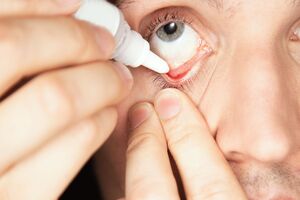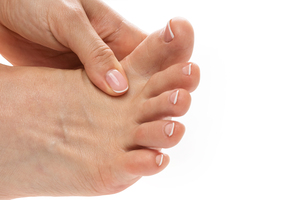Plantar Wart Treatment
Plantar warts are small, benign growths that show up on the bottoms of your feet. Over time, these warts may cause pain or discomfort, especially when walking. Knowing more about plantar warts can help you determine whether you need to see a doctor who can treat and improve your symptoms.
Plantar warts: Treatment, prevention, and more
Plantar warts are small skin growths that develop on the soles of your feet. According to the National Institutes of Health (NIH) and University of California San Diego (UCSD), plantar warts are caused by an infection with human papillomavirus (HPV).
A wart on the bottom of your foot is usually a plantar wart according to the UCSD. The UCSD says these types of warts are usually spread by coming into close physical contact with someone infected with HPV, or by walking barefoot on a moist surface contaminated with HPV. For example, you may get a plantar wart by walking barefoot on a contaminated area in a locker room or community pool.
The UCSD adds that you can prevent plantar warts by wearing shoes or protective footwear in places that could potentially expose you to HPV. Plantar wart treatment may involve freezing, salicylic acid, duct tape, and prescription medications, adds Harvard Medical School.
Treating and preventing plantar warts
Effective ways to prevent a plantar wart, according to Harvard Medical School and the University of Michigan, include avoiding contact with HPV-infected people if you have breaks in your skin, wearing footwear in public places, and using condoms during sexual intercourse.
Most plantar warts go away on their own over time without treatment, says the UCSD. However, treatment may be necessary if your plantar wart is causing pain or isn’t going away.
If you have a wart on your foot that won’t go away, make an appointment with a doctor who specializes in dermatology. A dermatologist can evaluate your feet, diagnose a plantar wart, and discuss your available treatment options.
Symptoms of a plantar wart
A plantar wart grows only on the bottom of your foot or toe. The University of Michigan states that most plantar warts are flat due to being pressed into the foot by walking, while the UCSD says that plantar warts may also be thick and raised.
Plantar warts may have tiny black dots on them, which are spots of dried blood. Other plantar wart symptoms include redness, swelling, and pain or discomfort that occurs in the foot while walking, adds the NIH.
How to treat a plantar wart
A plantar wart can be treated with freezing or topical agents, including duct tape or salicylic acid, according to Harvard Medical School. Your doctor may also prescribe medications to remove the wart.
During freezing, also known as cryotherapy, your doctor will typically apply liquid nitrogen to the wart that burns it away. Freezing may require three to four treatments and produces side effects including a burning sensation, pain, redness, and blistering, says Harvard Medical School.
Salicylic acid is an over-the-counter plantar wart treatment that comes in the form of a liquid, ointment, or patch. These products are placed directly on the wart for up to 15 minutes a day for 12 weeks, adds Harvard Medical School.
Duct tape can be placed directly over the wart for six days at a time. On the seventh day, you can remove the duct tape to soak and file your wart before starting another six-day treatment with the duct tape. According to Harvard Medical School, this treatment is thought to work by depriving the wart of oxygen and promoting the removal of dead skin and viral particles that make up the wart.
Imiquimod and fluorouracil are prescription medications your doctor may use to treat and remove a plantar wart according to Harvard Medical School. Your doctor or dermatologist can talk to you in greater detail about medications for plantar warts during your appointment.
How is it diagnosed?
A plantar wart can be diagnosed by your primary care doctor or a dermatologist. According to the NIH, these healthcare professionals can usually diagnose a plantar wart during a physical examination of your toe or foot.
Recovering from a plantar wart
Harvard Medical School reports that most warts go away on their own within one year and that two-thirds of warts go away within two years. It adds that some experts recommend having a plantar wart treated right away to reduce the risk of recurrence.
The recovery time for a plantar wart will depend on the treatment method you use. Your doctor or dermatologist can give you a more realistic expectation regarding the recovery time from a plantar wart based on the type of treatment.
Tips for preventing plantar warts
Plantar warts can typically be prevented by avoiding contact with people or surfaces infected with HPV, states the NIH.
According to the NIH and Harvard Medical School, effective prevention methods for plantar warts include:
- Wearing shoes, sandals, or other proper footwear in public places like swimming pools, locker rooms, and changing rooms.
- Using condoms when engaging in sexual intercourse.
- Using a waterproof plaster to cover a wart on your toe when swimming.
- Not sharing personal items with others such as towels, shoes, and socks.
- Wearing clean socks and shoes.
- Keeping your feet dry at all times.
- Removing warts that are present.
- Not touching your warts.
Find Plantar Wart Treatment near you
- Alabama
- Alaska
- Arizona
- Arkansas
- California
- Colorado
- Connecticut
- Delaware
- Florida
- Georgia
- Hawaii
- Idaho
- Illinois
- Indiana
- Iowa
- Kansas
- Kentucky
- Louisiana
- Maine
- Maryland
- Massachusetts
- Michigan
- Minnesota
- Mississippi
- Missouri
- Montana
- Nebraska
- Nevada
- New Hampshire
- New Jersey
- New Mexico
- New York
- North Carolina
- North Dakota
- Ohio
- Oklahoma
- Oregon
- Pennsylvania
- Rhode Island
- South Carolina
- South Dakota
- Tennessee
- Texas
- Utah
- Vermont
- Virginia
- Washington
- Washington DC
- West Virginia
- Wisconsin
- Wyoming
Plantar Wart Treatment FAQs
What causes plantar warts?
Plantar warts are caused by HPV, reports the NIH and UCSD. You may get a plantar wart on your heel, toe, or foot if you come into close physical contact with someone who has HPV or if you walk barefoot on a surface contaminated with HPV, such as in a locker room.
What is a plantar wart?
A plantar wart is a small skin growth that shows up on the bottom of your foot, says the NIH. These types of warts are caused by an HPV infection.
How do you get plantar warts?
You can get plantar warts by having HPV or by coming into close physical contact with someone who has HPV, says the NIH. Plantar warts can also grow on your feet if you walk barefoot on a moist or wet surface used by someone with HPV, such as the floor of a locker room or community pool.
What causes warts on feet?
A wart on your foot can show up after you walk barefoot in a moist area that has been used by someone else with a wart or HPV, reports the NIH. You may also develop warts on your feet if you have HPV, or if you come into close physical contact with someone who has HPV, adds the NIH.
How can plantar warts be treated?
Plantar warts can be treated with salicylic acid, duct tape, freezing, or prescription medications, says Harvard Medical School. If you have one or more plantar warts, a dermatologist can examine your feet and recommend the best treatment for you based on your symptoms.
Are warts painful?
Most warts are not painful, says the NIH. However, plantar warts on the soles of your feet may eventually become painful when walking or exercising, adds Harvard Medical School. See your doctor if your warts are causing pain and discomfort so they can be treated right away.
How do you get warts on your feet?
Warts on your feet generally occur when you contract HPV through a break in the skin on your feet, reports Harvard Medical School. Warts on your feet are generally spread when you come into close physical contact with someone who has HPV, or when you walk barefoot in a contaminated public area such as a gym, locker room, or community pool.
Where can I get plantar warts removed?
If plantar warts do not go away on their own over time or after treating them on your own, make an appointment with a dermatologist who specializes in skincare. Solv features a directory of only the highest-rated doctors in your area, so you can choose among providers that offer the best in quality healthcare. Visit Solv today to make a same-day appointment with a doctor who can remove your plantar warts.
Solv has strict sourcing guidelines and relies on peer-reviewed studies, academic research institutions, and medical associations. We avoid using tertiary references.
Everyday Healthcare, Simplified
Expert advice to help you live your best life








